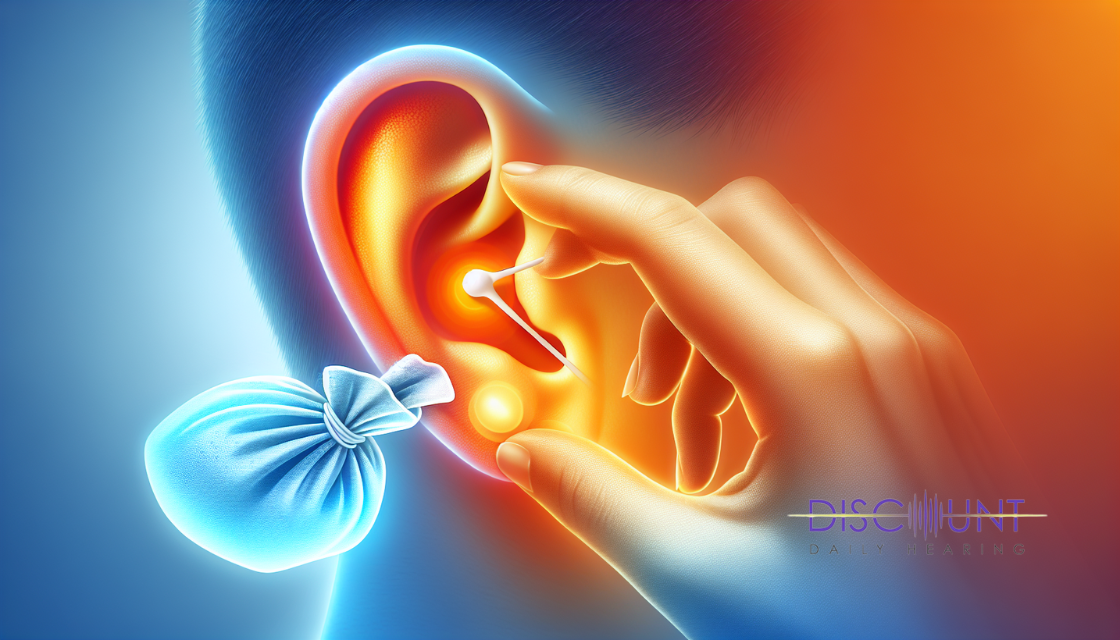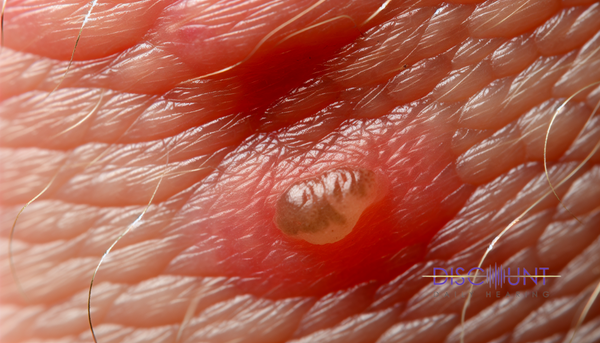Sales Line 954-266-0423
Service Line 888-265-7124
Sales Line 954-266-0423
Service Line 888-265-7124

Wondering why your earlobe is swollen? Common reasons include recent piercings, allergic reactions, injuries, or a bug bite. Often, you can reduce swelling with home remedies like warm or cold compresses. However, if you encounter severe pain, redness, and discharge, it’s time to seek medical help. This guide unpacks the usual suspects behind your swollen ear lobe and shares tips on symptom relief, highlighting when a doctor’s visit becomes essential.
The outer ear, comprising the earlobe and cartilage, are the two main parts that can become swollen due to various reasons, sometimes leading to swollen ears. Swollen earlobes often result from triggers such as:
Interestingly, inflammation and swelling can manifest not only in the lobe but in different areas of the ear, such as the inner ear, as well.
Infections, allergies, and trauma are typical causes of earlobe swelling, and each cause brings its unique set of symptoms. For instance, swimmer’s ear, an infection in the ear canal, can lead to inflammation and swelling, sometimes even affecting the earlobe.
Swollen earlobes are often accompanied by redness, pain, and often yellow pus discharge, which are the common symptoms of ear swelling. In case of bug bites, the swelling is usually coupled with additional symptoms such as itching.
The prompt identification of these symptoms will guide you in deciding whether to manage them at home or seek immediate medical help.
Distinguishing between infections and allergic reactions is key to effective treatment. Often, allergic reactions in the earlobe, such as contact dermatitis, are caused by jewelry containing nickel or other non-hypoallergenic metals. Symptoms can include:
Cosmetics, medications, and various diseases can also trigger similar allergic reactions presenting as a rash on the earlobe. Take note that severe allergic reactions, featuring hives, breathing difficulties, or other intense symptoms, require immediate medical intervention.
Experiencing itchy throat and ears can be frustrating, especially when you don’t know what’s causing it. Several common factors can lead to these symptoms, including:
Understanding these causes can help you identify and manage your symptoms more effectively.

Injuries such as pulling too hard on an earring, wearing heavy or too-big earrings, cuts, or getting hit on the ear during sports can all result in earlobe swelling. Another condition, hematoma auris, or cauliflower ear, results from an injury that causes blood to collect in the outer ear, leading to swelling, infection, and deformity if not treated properly.
An abscess or boil on the earlobe, typically filled with pus due to bacterial infection, can cause painful swelling. Sebaceous cysts, while non-infectious, can also cause a swollen earlobe and may require medical evaluation.
Keep in mind, if you experience severe pain, fever, hearing loss, or discharge, particularly if the pus is thick, yellow, bloody, or foul-smelling, it’s time to head for the emergency room.
An infected ear piercing can cause swelling in the earlobe, regardless of how new or old the piercing is, sometimes accompanied by pus discharge and tenderness. Wearing earrings that are too tight, heavy, or large can result in swelling due to minor injuries to the earlobe.
People with gauges or plugs may experience swelling when they stretch the ear, which is a specific concern for those with modified ear piercings.
Nickel in earrings is a common cause of allergic reactions leading to swollen earlobes. The symptoms of a nickel allergy can include itchy, inflamed, red skin, and rash, indicating contact dermatitis. Contact dermatitis can develop over time as the skin has increased exposure to irritant jewelry, leading to symptoms such as swollen earlobes.
Transitioning to hypoallergenic metals and eliminating irritating jewelry can avert redness and swelling, providing a successful prevention approach for individuals with nickel allergies.

If you’re dealing with a blocked ear and need quick relief at home, this article is for you. Understanding how to open a blocked ear at home can save you a trip to the doctor and provide immediate comfort. We’ll cover effective home remedies like yawning, chewing gum, and using warm compresses to help you regain clear hearing.
Blocked ears often present a variety of symptoms, so recognizing the signs early on is helpful. Common symptoms include impaired hearing, balance issues, and a general feeling of discomfort. A frequent clogged sensation might result from congestion, fullness, or ear pressure due to blocked eustachian tubes and stuffy ears. In some cases, issues like a swollen ear lobe could also contribute to discomfort or further complications.

While a visit to the doctor is necessary for severe cases, mild earlobe swelling can often be managed at home. Warm compresses, for instance, can help soothe a swollen earlobe and are particularly beneficial if a cyst is suspected, as they can alleviate discomfort. On the other hand, a cold compress can reduce blood flow to the swollen area, which may decrease swelling and provide relief.
Over-the-counter pain medication can be taken for pain relief if the earlobe is swollen and painful. Astringents like witch hazel can help reduce swelling in the earlobe, but they should not be used if the skin is broken. These home remedies can prove effective in treating swollen lobes, however, if symptoms persist, it is advisable to seek professional medical consultation.
Alternating between warm and cold compresses can help manage earlobe swelling. Here’s how to do it:
By alternating between warm and cold compresses, you can effectively treat swollen lobes and manage earlobe swelling.
For a cold compress, consider using either a store-bought ice pack or make one yourself by encasing ice in a cloth, then apply it to your earlobe at brief intervals to diminish swelling and alleviate pain.
Over-the-counter (OTC) medications can be a godsend when it comes to symptom relief. Here are some examples of OTC medications that can help with allergic reactions:
For pain and swelling, over-the-counter medications such as ibuprofen, acetaminophen, or naproxen can be taken to alleviate discomfort and treat swollen earlobes. Remember, NSAIDs like aspirin and ibuprofen also alleviate discomfort from swollen earlobes.

Bug bites or insect stings on the earlobe can cause symptoms such as:
The severity of swelling and itchiness from insect bites on the ear can vary depending on the type of insect. Environmental factors, such as sensitivity to poisonous plants, can also lead to symptoms similar to those caused by insect bites, including swelling, stinging, and itching of the earlobe.
Detecting a bug bite on the earlobe and comprehending the suitable treatment steps is vital for successful management. We’ll delve into how to identify a bug bite and detail the proper treatment procedures.
A visible bite or dot at the center of the swelling is a primary sign of a bug bite on the earlobe. Swelling and itchiness often occur with an insect bite on the earlobe, providing further evidence of a bug bite.
If the swelling is accompanied by a combination of a visible bite mark, redness, and itchiness, it indicates that the swelling is likely due to an insect bite.
Antihistamines and hydrocortisone creams are first-line treatments for bug bites, aiding in the reduction of itching and swelling experienced with earlobe reactions. However, medical attention should be sought if an insect bite on the earlobe causes severe allergic reactions, or if symptoms worsen or spread, especially if the reaction extends to the neck, face, or throat.
For pain and swelling resulting from insect bites, over-the-counter medications such as ibuprofen, acetaminophen, or naproxen can be taken to alleviate discomfort.
Although most causes of swollen earlobes are trivial, it’s of utmost importance to identify when the condition signals a more severe medical problem. Infections such as otitis externa, mastoiditis, and abscesses can lead to swollen earlobes and may present with fever, headache, and hearing loss, sometimes requiring surgical repair or antibiotics.
Non-infectious conditions like sebaceous cysts can also cause swollen earlobes, which while often not life-threatening, may necessitate medical drainage or further intervention. Signs that demand immediate medical attention include:
Cellulitis, a bacterial skin infection, can cause the earlobe to become red, swollen, tender, and hot to the touch, often accompanied by a rash and fever. The usual treatment for cellulitis is a prescription for an oral antibiotic, with a full course typically lasting 5 to 10 days, even if symptoms improve before the end of the course.
Bear in mind, it’s essential to seek medical help for cellulitis, as it can potentially disseminate to the bloodstream or other tissues if not treated in a timely manner.
An auricular hematoma is a collection of blood trapped between the skin and cartilage of the outer ear, caused by very forceful trauma or impact. This can lead to what’s commonly known as cauliflower ear if the blood collects in the outer ear and is not drained properly. Treating auricular hematoma requires draining the collected blood and applying a tight dressing to avoid re-accumulation, with antibiotics sometimes prescribed to ward off infection.
To prevent recurrence, it’s advised to use head protection during contact sports and apply ice after trauma, along with refraining from physical activity and contact sports for certain periods post-treatment.
If earlobe pain persists after several days of home treatment or if symptoms exacerbate, consulting a healthcare provider is recommended. Medical advice for earlobe swelling should be sought if symptoms persist for more than two weeks or are severe in nature. While many conditions that cause swollen earlobes can be managed at home, in the presence of severe symptoms or signs indicating a more serious condition, one should consider visiting the emergency room.
An abscess is a concern that requires prompt medical intervention and is identified by symptoms like pain, swelling, fever, nausea, and drainage from the area.
Persistent swelling and pain in the earlobe due to ears pierced rejection or an infected piercing necessitates seeking professional medical advice. Remember, emergency medical attention should be sought immediately in the case of a severe allergic reaction, such as hives and difficulty breathing, caused by an insect sting.
When uncertainty arises, it’s always safer to seek medical attention promptly.
Medical treatment, such as antibiotics, may be required if home remedies do not reduce swelling or if symptoms worsen. Oral or topical antibiotics are necessary treatments for bacterial infections causing earlobe swelling, such as those that may follow an insect bite.
In severe cases, surgical intervention may be required. As a general rule, it’s essential to consult with a healthcare professional to guarantee you receive the appropriate treatment for your particular condition.
In conclusion, understanding the causes and symptoms of swollen earlobes is the first step towards effective management. From allergies to infections, several factors can cause earlobe swelling. While home remedies can provide relief in mild cases, severe pain or persistent symptoms necessitate a healthcare professional medical advice. Early recognition and timely treatment can help prevent complications and ensure the health of your earlobe. So, next time you feel that odd puffiness in your earlobe, you know what to do!
Your swollen earlobe may be due to infection, allergies, or trauma. It's important to seek medical attention if your symptoms are severe.
Outer ear swelling can be caused by infections, trauma, swimmer's ear, and allergies. Infections are the most common cause, often brought on by bacteria, fungi, viruses, or allergies.
To reduce swelling in the ear, consider using warm or cold compresses for minor cases, or consult a healthcare professional for prescription medications or ointments in more severe situations.
An infected earlobe may appear red, swollen, and painful, with foul-smelling yellow pus or discharge. It may also feel hot to the touch and exhibit tenderness and inflammation.
If you notice a visible bite or dot at the center of swelling on your earlobe, along with itchiness and redness, it is likely a bug bite. Seek medical attention if the symptoms worsen or if you have severe reactions.